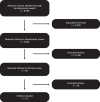Effectiveness of mechanical and chemical decontamination methods for the treatment of dental implant surfaces affected by peri-implantitis: A systematic review and meta-analysis
- PMID: 38345466
- PMCID: PMC10847712
- DOI: 10.1002/cre2.839
Effectiveness of mechanical and chemical decontamination methods for the treatment of dental implant surfaces affected by peri-implantitis: A systematic review and meta-analysis
Abstract
Objective: To assess which decontamination method(s) used for the debridement of titanium surfaces (disks and dental implants) contaminated with bacterial, most efficiently eliminate bacterial biofilms.
Material and methods: A systematic search was conducted in four electronic databases between January 1, 2010 and October 31, 2022. The search strategy followed the PICOS format and included only in vitro studies completed on either dental implant or titanium disk samples. The assessed outcome variable consisted of the most effective method(s)-chemical or mechanical- removing bacterial biofilm from titanium surfaces. A meta-analysis was conducted, and data was summarized through single- and multi-level random effects model (p < .05).
Results: The initial search resulted in 5260 articles after the removal of duplicates. After assessment by title, abstract, and full-text review, a total of 13 articles met the inclusion criteria for this review. Different decontamination methods were assessed, including both mechanical and chemical, with the most common method across studies being chlorhexidine (CHX). Significant heterogeneity was noted across the included studies. The meta-analyses only identified a significant difference in biofilm reduction when CHX treatment was compared against PBS. The remaining comparisons did not identify significant differences between the various decontamination methods.
Conclusions: The present results do not demonstrate that one method of decontamination is superior in eliminating bacterial biofilm from titanium disk and implant surfaces.
Keywords: biofilm; decontamination; dental implants; periimplantitis.
© 2024 The Authors. Clinical and Experimental Dental Research published by John Wiley & Sons Ltd.
Conflict of interest statement
The authors declare no conflict of interest.
Figures





Similar articles
-
Comparison of the efficacy of Er,Cr:YSGG laser on oral biofilm removal from implant surfaces with various application times for the treatment of peri-implantitis defects: ex vivo study.BMC Oral Health. 2024 Aug 22;24(1):980. doi: 10.1186/s12903-024-04698-5. BMC Oral Health. 2024. PMID: 39174958 Free PMC article. Clinical Trial.
-
Efficacy of biofilm decontamination methods of dental implant surfaces: A systematic review of in vitro studies.Eur J Oral Sci. 2025 Apr;133(2):e70005. doi: 10.1111/eos.70005. Epub 2025 Feb 20. Eur J Oral Sci. 2025. PMID: 39980138
-
The efficacy of implant surface decontamination using chemicals during surgical treatment of peri-implantitis: A systematic review and meta-analysis.J Clin Periodontol. 2023 Jun;50 Suppl 26:336-358. doi: 10.1111/jcpe.13794. Epub 2023 Mar 12. J Clin Periodontol. 2023. PMID: 36792071
-
Microbial Biofilm Decontamination on Dental Implant Surfaces: A Mini Review.Front Cell Infect Microbiol. 2021 Oct 8;11:736186. doi: 10.3389/fcimb.2021.736186. eCollection 2021. Front Cell Infect Microbiol. 2021. PMID: 34692562 Free PMC article.
-
Photo/mechanical and physical implant surface decontamination approaches in conjunction with surgical peri-implantitis treatment: A systematic review.J Clin Periodontol. 2023 Jun;50 Suppl 26:317-335. doi: 10.1111/jcpe.13783. Epub 2023 Feb 26. J Clin Periodontol. 2023. PMID: 36709953
Cited by
-
Enhanced peri-implantitis management through purple-LED irradiation coupled with silver ion application and calcium phosphate gene transfection carrier coating.Sci Rep. 2025 Apr 21;15(1):13759. doi: 10.1038/s41598-025-96075-7. Sci Rep. 2025. PMID: 40258901 Free PMC article.
-
Surface Decontamination on the Reconstructive Therapy of Peri-Implantitis: A Multicenter Randomized Clinical Trial.Clin Implant Dent Relat Res. 2025 Aug;27(4):e70075. doi: 10.1111/cid.70075. Clin Implant Dent Relat Res. 2025. PMID: 40693504 Free PMC article. Clinical Trial.
References
-
- Note: References marked with asterisk (*) are cited in supplementary information file.
-
- *Abushahba, F. , Söderling, E. , Aalto‐Setälä, L. , Hupa, L. , & Närhi, T. O. (2019). Air abrasion with bioactive glass eradicates streptococcus mutans biofilm from a sandblasted and acid‐etched titanium surface. Journal of Oral Implantology, 45(6), 444–450. 10.1563/aaid-joi-D-18-00324 - DOI - PubMed
Publication types
MeSH terms
Substances
Grants and funding
LinkOut - more resources
Full Text Sources
Miscellaneous

